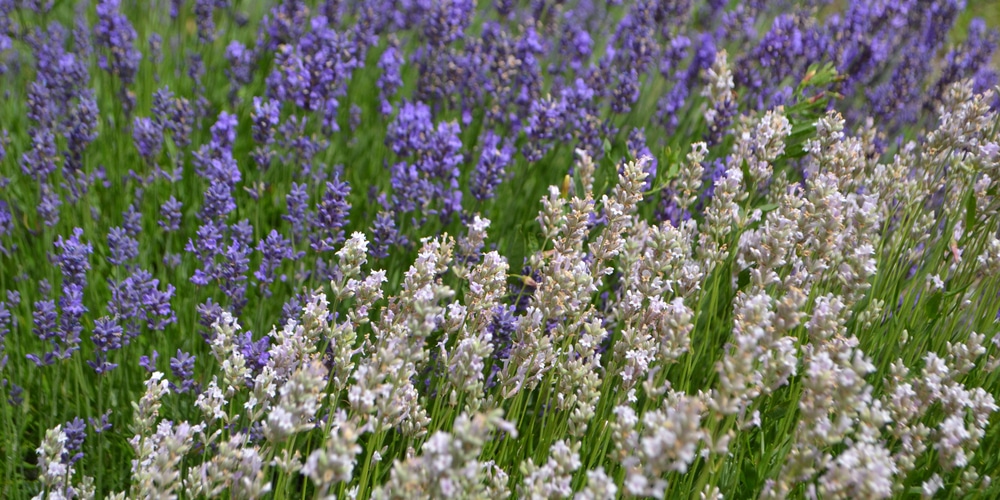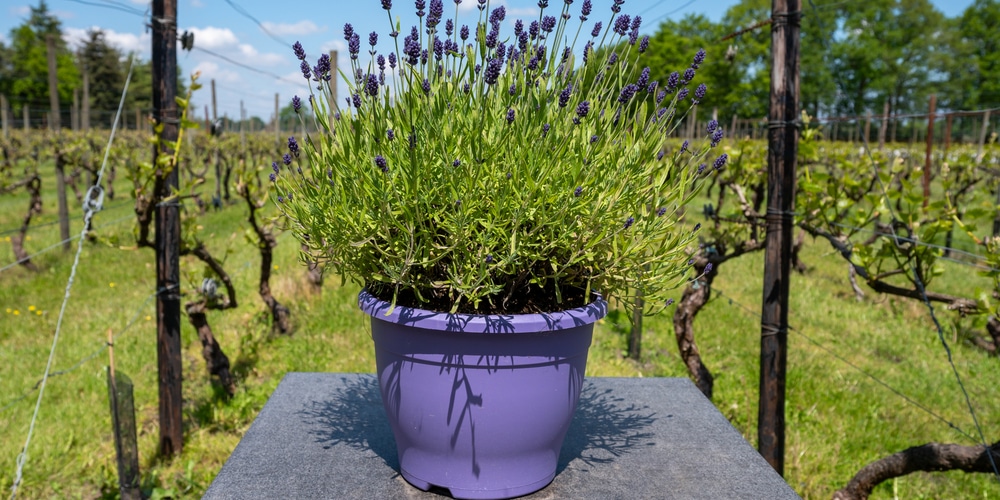Lavender is a wonderfully fragrant and versatile plant that can be grown in many parts of the world. It has been used for centuries for its therapeutic properties and is still popular today for use in aromatherapy and other treatments.
Its aromatic flowers and leaves are also used in potpourris, sachets, and culinary purposes. Prized for its beauty, lavender is a mainstay in many gardens.
But can this delicate-looking plant thrive in the hot, humid climate of Oklahoma? It’s difficult but possible.
Oklahoma’s cold winters and hot summers provide some challenges for growing lavender, but with a little care, you can have a healthy lavender plant in your garden.
Common Challenges When Growing Lavender in Oklahoma
For anyone who has ever tried to grow lavender in Oklahoma, the common challenges are all too familiar. With its hot, humid summers and cold, dry winters, the state is far from ideal for this delicate plant.
Lavender requires a long, cool growing season in order to thrive, and Oklahoma simply doesn’t provide that. The heat and humidity of summer are particularly hard on lavender, causing the plants to wilt and the flowers to brown.
In addition, lavender is susceptible to a variety of fungal diseases, which can be difficult to control in Oklahoma’s humid climate.
On the other hand, the state’s cold winters can also be tough on lavender. While the plant is winter hardy, it can be damaged by freezing temperatures and harsh winds. In addition, the dryness of Oklahoma’s winters can cause the plants to become dormant, which can make it difficult to get them started in the spring.
As a result, growing lavender in Oklahoma can be a real challenge. However, for those who are willing to put in the extra effort, the rewards can be truly stunning. Lavender thrives in pots and raised beds, making it possible to create a beautiful display even in the most challenging conditions.
Tips on Growing Lavender in Oklahoma
Oklahoma is known for its diverse array of plant life, but that doesn’t mean that all plants will thrive in the state’s climate. Lavender is a delicate herb that requires a specific set of growing conditions, and Oklahoma’s hot, dry summers can be tough on this fragile plant.
For those who want to put in the extra effort, there are a few tips that can help your lavender plants thrive in Oklahoma.
Choose the Right Lavender Variety
If you’re interested in growing lavender in Oklahoma, the first step is to choose the right lavender variety. The most popular type of lavender is Lavandula Angustifolia. This variety is tolerant of both heat and cold, making it a good choice for Oklahoma’s climate.
English lavender also has a strong fragrance, so it’s a good choice if you’re looking to use your lavender for aromatherapy or potpourri.
Lavandula x Intermedia is another type of lavender that can be grown in Oklahoma. This variety is more tolerant of heat and humidity, making it a good choice for the state’s climate.
Prepare Your Soil
One of the continuous challenges you’ll face when growing lavender in Oklahoma is the state’s hot, humid summers. These conditions can be tough on lavender, causing the plants to wilt and the flowers to brown.
To help your lavender plants thrive in these conditions, it’s essential to prepare your soil before planting. Lavender prefers well-drained soil with a pH level of around seven.
In addition, you’ll need to add organic matter to your soil to help it retain moisture. This can be done by adding compost or manure to your garden bed before planting.
Water Deeply and Regularly
Another important factor in growing lavender in Oklahoma is watering. Lavender requires a lot of water, so it’s important to water your plants deeply and regularly. During the hottest months of the year, you may need to water your lavender plants twice a week. However, be sure to check the soil before watering to make sure it’s not too wet.
Too much water can be just as harmful as too little, so it’s important to find a balance.
Protect Your Plants from the Heat
Oklahoma’s hot, humid summers can be tough on lavender plants. To help protect your plants from the heat, it’s important to choose a site that receives full sun in the morning but is shaded by the afternoon sun.
In addition, you’ll need to take steps to improve air circulation around your plants. This can be done by planting your lavender in raised beds or pots or by adding a fan to your garden.
You should also consider mulching your plants to help protect them from the heat. A layer of straw or bark chips around your plants’ base will help keep the roots cool and moist.
Timing is Crucial
When growing lavender in Oklahoma, timing is crucial. The best time to plant your lavender is in the spring after the last frost has passed. Lavender plants need a period of cool weather to thrive, so it’s important to wait until the temperatures have cooled before planting.
If you plant your lavender too early, you may find that the plants bolt or produce flowers too early in the season. This can be harmful to the plant, so it’s important to wait until the conditions are just right before planting.
Growing lavender in Oklahoma: Final Thoughts
It’s challenging to make lavenders thrive in Oklahoma’s climate, but it is possible with the right variety and care.
If you’re willing to put in the work, you can enjoy fresh lavender blooms in your garden for years to come.
Related article: How Deep Are Lavender Roots?


